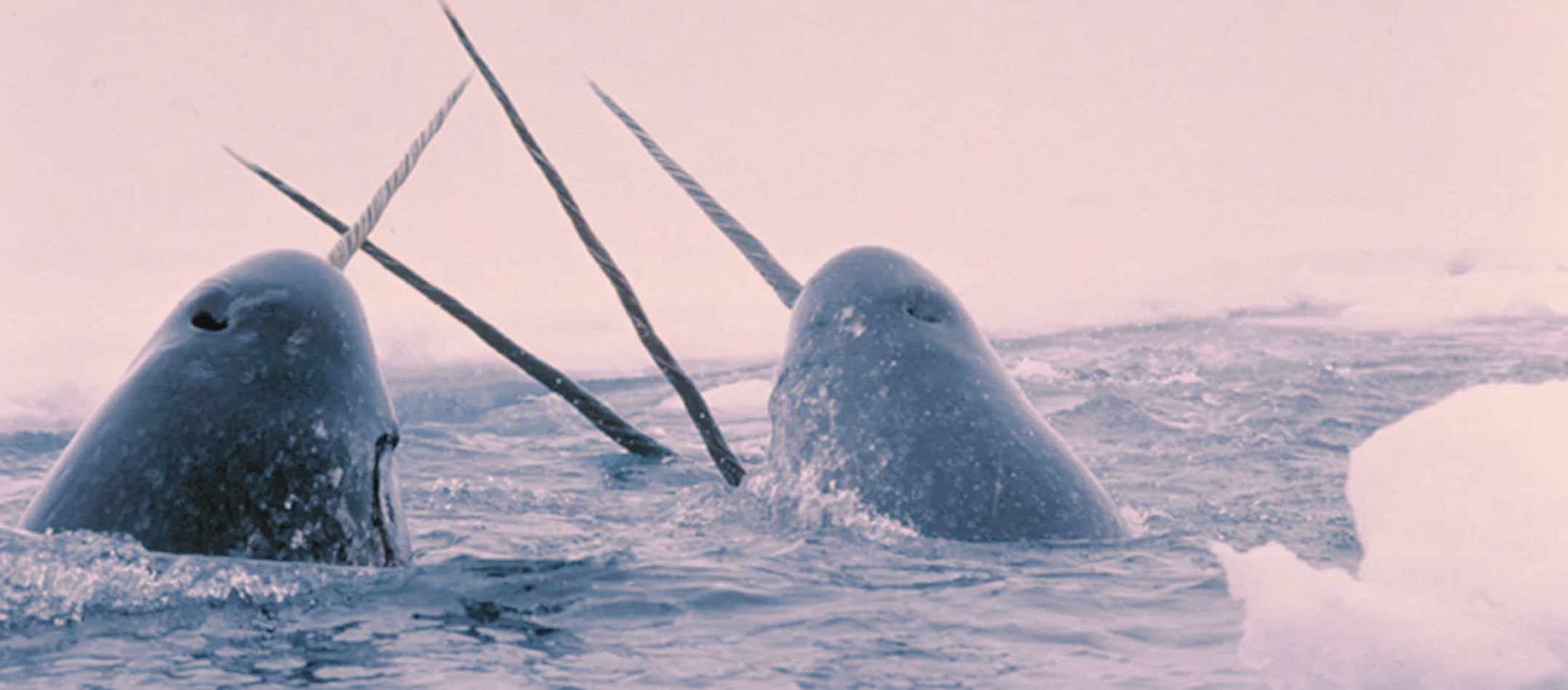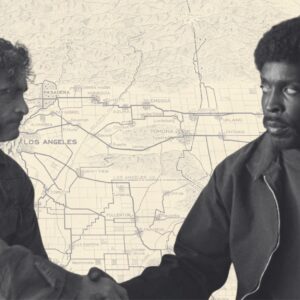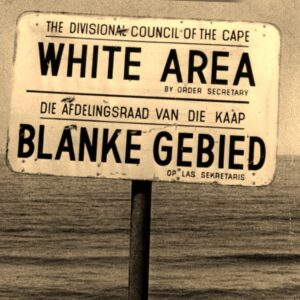
Murder, Polar Bears, and Arctic Hurricanes: The Many Twists and Turns of a 2008 Whaling Research Expedition
“All efforts were futile. We were merely spectators to the ways of nature.”
Explorers come from many backgrounds. Dr. Martin Nweeia started as a dental surgeon. Eventually, his interests expanded to include dental anthropology—the study of how teeth offer clues to species’ diets, health, and even evolution and migration.
Nweeia gave speeches around the world on dental anthropology, but there was one species that had him stumped. In fact, it had the entire world stumped. For more than five hundred years, scientists had been unable to figure out the purpose of the narwhal’s tusk— a single tooth that can be up to nine feet long. These were mysterious and valuable. As The New York Times feature about Nweeia’s work noted, “In the 16th century, Queen Elizabeth received a tusk valued at £10,000—the cost of a castle.”
The scientists’ best guess was that the tusk was a secondary sex characteristic, which basically meant they had no idea what it did. But Nweeia had a theory he wanted to test. So, after several research expeditions to the Arctic, he led a team that dissected and analyzed the narwhal’s tusk, and they proved something astonishing: Far from being some dead organ, the tusk was a sensory rod that fed the whale information about its environment. As that same New York Times article reported, “The nerves can detect subtle changes of temperature, pressure, particle gradients and probably much else, giving the animal unique insights.”
Nweeia’s 2005 discovery went viral; it also set a record for “narwhal” on Google Trends.
But Nweeia wasn’t finished. His 2005 report was a stunning breakthrough that solved a five-hundred-year-old mystery, but his insights had originated in the laboratory. Could he prove how the tusk works in the field itself? Could he go to the Arctic and analyze the whales in action?
Far from being some dead organ, the tusk was a sensory rod that fed the whale information about its environment.
He spent years preparing for the expedition. He applied for grants. He trained by testing novel equipment, such as field laboratories that could float on pontoons. And in 2008, he took The Explorers Club flag number 24 with him into the Arctic, a flag that had been in service since 1929 and had traveled from the Virunga Mountains to Kapingamarangi.
The result?
This is Nweeia’s letter from the edge, sent to the president of The Explorers Club:
Dear Jon,
On almost every level of assessment, our expedition this year was a complete failure. I have little to show for the effort. To make matters worse, we had about every tragedy an expedition could experience including a gruesome murder. . .
After some reflection, I thought, “this story is exactly what people need to know about my work. These are the experiences I sludge through to get to ‘the meaningful insights and results.’ ” When people ask, “What is it like to do whale research in the Arctic?” I will think of my expedition of 2008, and the Explorers Club Flag 24. . .
On the first day of arrival into the small town of Repulse Bay, population 748, the lead hunter for the Hunters and Trappers Organization, whom we had met with only hours before to discuss plans and arrangements for our expedition site, was shot. His girlfriend had taken a 38 rifle to the back of his head and plastered most of its contents onto the kitchen wall.
Nweeia had met the hunter five hours before the murder. The hunter lived in a small Inuit community, where most people knew him. So, on the night after the murder, the town’s streets were filled with anguished cries from the Inuit—wails of loss and pain. The murder scene was so gruesome and painful to process that the community simply burnt the house down.
Every day for three weeks, Nweeia woke up hoping to see a narwhal. Every night he went to bed disappointed.
The hunter was supposed to be Nweeia’s main guide, and this happened on the very first day of the expedition. Should he keep going? He conferred with his team—including the local hunters, who welcomed the distraction—and decided they still had the resources, training, and motivation to push forward. Nweeia knew that despite this tragic first day, as long as they found some whales, he could still complete his objectives.
His letter continues:
We located our expedition site about 20 km South of the town. For the first time in fourteen years, Repulse Bay did not have any large narwhal group migrate through its inlets near the town. . . During our weeks there, we did not see one whale. By comparison, during the last two years, there were hundreds spotted. All efforts were futile. We were merely spectators to the ways of nature.
Every day for three weeks, Nweeia woke up hoping to see a narwhal. Every night he went to bed disappointed. He held out hope until the very last day, as you never know when your luck can flip. But no whales came. “The Arctic is not there to make you happy,” Nweeia says now. “It’s going to do whatever it’s going to do.”
So, with the odds of accomplishing his mission vanishing, he turned his focus to safety and survival. What else could go wrong?
Visits from polar bears were disturbingly common. Four times they came, twice by day and two times at night stalking the camp. The danger became great as darkness set in on the camp, making it difficult to spot and follow the bear’s path. The bear moved with great agility around the rock ledges that surrounded the camp. One bear managed to cleverly get into the camp around 3:00 AM.
“This is a great example of the difference between Inuit knowledge and qallunaaq knowledge,” says Nweeia. “Qallunaaq” is an Inuit term referring to people from south of the Arctic. Nweeia often thinks of a prior expedition, on an ice floe, where he was on polar bear watch with an Inuit hunter. It was nighttime.
“We recognize that the polar bear is king of this environment,” said the hunter.
“Wake me up if a polar bear gets too close,” the Inuit told him. “How close is close?”
The hunter just looked at him. “You’ll know.”
So at three in the morning, Nweeia saw a polar bear crawl its way onto the ice floe. The bear prowled toward him. It got up on its hind legs as if to strike.
Martin knocked on the hunter’s small tent. “Is that close enough?” he pointed to the oncoming bear.
“Oh yes.” The hunter emerged with a gun.
He took aim but didn’t shoot. He just waited. Patient. Calm. He wanted to see what the bear would do.
And the polar bear simply walked by the campsite and then left.
Nweeia, amazed, asked the hunter how he knew what to do.
“We recognize that the polar bear is king of this environment,” said the hunter.
Flash forward to Nweeia’s 2008 expedition. Two polar bears approached the camp. They weren’t threatening. But immediately, without much consideration, one of the qallunaaq fired a warning shot. This scattered the polar bears, but they came back every night and tried to attack.
Nweeia’s team survived the polar bears but faced one more surprise.
The final days of the expedition brought the worst. An Arctic hurricane was forecast. With lingering hopes of spotting whales that could still be captured and released, we remained in camp to the last day before departure. We watched from a distance, as black smoke billowed in the sky. . .
Persistent winds came first from the South then switched with even colder winds coming from the North. In the midst of the storm was a full moon which created a tidal surge that largely destroyed the camp. Later, we would learn that steady winds were between 80-90 mph with 120 mph gusts. All of us piled into one wooden shack that was built as an outpost.
The hurricane violently pulled the tents from their stakes. The tent poles snapped. A Zodiac boat flipped and landed on a broken tent. In contrast, the Inuit hunters had built a small wooden shelter, and this survived. Nweeia’s state-of-the-art “high-tech” tents didn’t stand a chance. But there was one silver lining:
In the midst of tragedy came a small offering of knowledge from an unsuspecting source. I have always found that when we search for our deepest questions and inspiration, the answer and the messenger can quite often be right in front of us.
On expedition, the hunter who joined me on polar bear watch was relating a story from his grandfather who told him the telling sign of narwhal appearance. “My grandfather said, if the water does not show the reddish brown from young arctic cod, the narwhal will not come,” he told me one night.
Pieces of a scientific puzzle sometimes come in odd forms and unexpected experiences. My work had already uncovered the ability of narwhal tusks to sense changes in water salinity The pieces began to fit. Why did narwhal brave the spring ice leads?
The expedition was a disaster by every objective standard, but Nweeia’s conversation with the hunter stuck with him. It felt somehow important. He turned the words around in his head: “If the water does not show the reddish brown from young arctic cod, the narwhal will not come.”
Nweeia eventually connected the dots between the Inuit’s observation and his own research, field tests, and scientific theories. He realized that since the Inuit did not see the reddish brown, they could have predicted they would not find whales—an important data point he could weave into his analysis. “I like combining Inuit knowledge and science, to show people that science is not the way to think, it’s one way to think,” says Nweeia. And ultimately, this open-mindedness to Inuit knowledge moved the science forward.
And after the doomed expedition? Nweeia did not give up. He eventually returned to the Arctic, he found his narwhals, and once again he published a study that made front-page news. “I’m incredibly stubborn and obstinate,” says Nweeia, channeling many members of The Explorers Club. “If you put up a wall, I’m climbing it. If you put up a moat, I’m swimming across it.”
In a 2023 addendum to his letter, Nweeia wrote:
This experience, carved in a sheet of ice, sits in my brain. Fifteen years later, it hasn’t melted one drop.
__________________________________

The Explorers Club Presents Letters From the Edge: Stories of Curiosity, Bravery, and Discovery by The Explorers Club and Jeff Wilser. Used with the permission of the publisher, Crown Publishing, an imprint of Penguin Random House. Copyright © 2025 by The Explorers Club and Jeff Wilser.
Jeff Wilser
Jeff Wilser is the author of six books, including Alexander Hamilton’s Guide to Life and The Good News About What’s Bad for You . . . and The Bad News About What’s Good for You. His work has appeared in print or online at GQ, Esquire, Time, New York magazine, Glamour, Cosmo, mental_floss, MTV, and the HuffPost. His advice has been syndicated to a network of two hundred newspapers including the Miami Herald and the Chicago Tribune. He grew up in Texas, used to live in New York, and is now traveling the world indefinitely.












